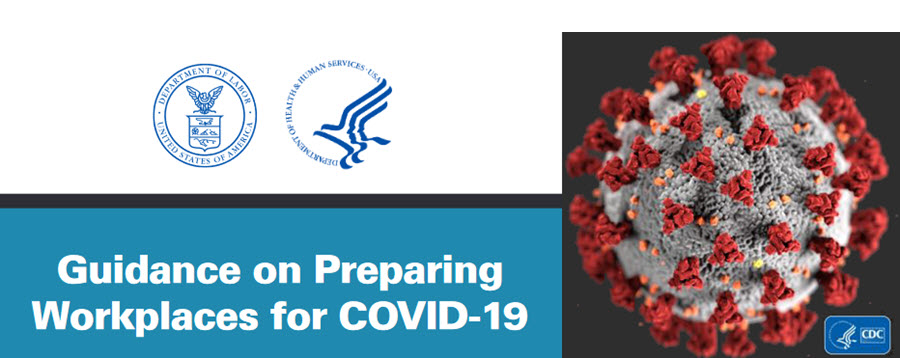
OSHA Guidance on Preparing Workplaces for COVID-19

As part of its worker-protection role, OSHA has prepared a document to help employers prepare their workplaces for the coronavirus pandemic. The document contains recommendations and descriptions of mandatory safety and health standards. It is intended to help employers and workers identify risk levels in workplace settings and to determine any appropriate control measures to implement. Additional guidance may be needed as COVID-19 outbreak conditions change as new information becomes available.
OSHA developed the COVID-19 planning guidance based on traditional infection prevention and industrial hygiene practices. It focuses on the need for employers to implement engineering, administrative and work practice controls and personal protective equipment (PPE), as well as considerations for doing so. Here are some key points form the document, which is available here (pdf).
Follow Existing OSHA Standards
Existing OSHA standards may apply to protecting workers from exposure to and infection with SARS-CoV-2. While there is no specific OSHA standard covering SARS-CoV-2 exposure, some OSHA requirements may apply to preventing occupational exposure. Among the most relevant are:
1. OSHA’s Personal Protective Equipment (PPE) standards (in general industry, 29 CFR 1910 Subpart I), which require use of gloves, eye and face protection and respiratory protection.
When respirators are necessary to protect workers or where employers require respirator use, employers must implement a comprehensive respiratory protection program in accordance with the Respiratory Protection standard (29 CFR 1910.134).
2. The General Duty Clause, Section 5(a)(1) of the Occupational Safety and Health (OSH) Act of 1970, 29 USC 654(a)(1), which requires employers to furnish to each worker “employment and a place of employment, which are free from recognized hazards that are causing or are likely to cause death or serious physical harm.”
3. OSHA’s Bloodborne Pathogens standard (29 CFR 1910.1030) applies to occupational exposure to human blood and other potentially infectious materials that typically do not include respiratory secretions that may transmit SARS-CoV-2. However, the provisions of the standard offer a framework that may help control some sources of the virus, including exposures to body fluids not covered by the standard.
Check OSHA Resources
The OSHA COVID-19 webpage provides additional information about OSHA standards and requirements, including requirements in states that operate their own OSHA-approved State Plans. It also addresses recordkeeping requirements and injury/illness recording criteria, as well as applications of standards related to sanitation and communication of risks related to hazardous chemicals that may be in common sanitizers and sterilizers.
Employers should work with their local and state health departments to ensure appropriate local protocols and guidelines, such as updated/additional guidance for cleaning and disinfection, are followed, including for identification of new potential cases of COVID-19.

